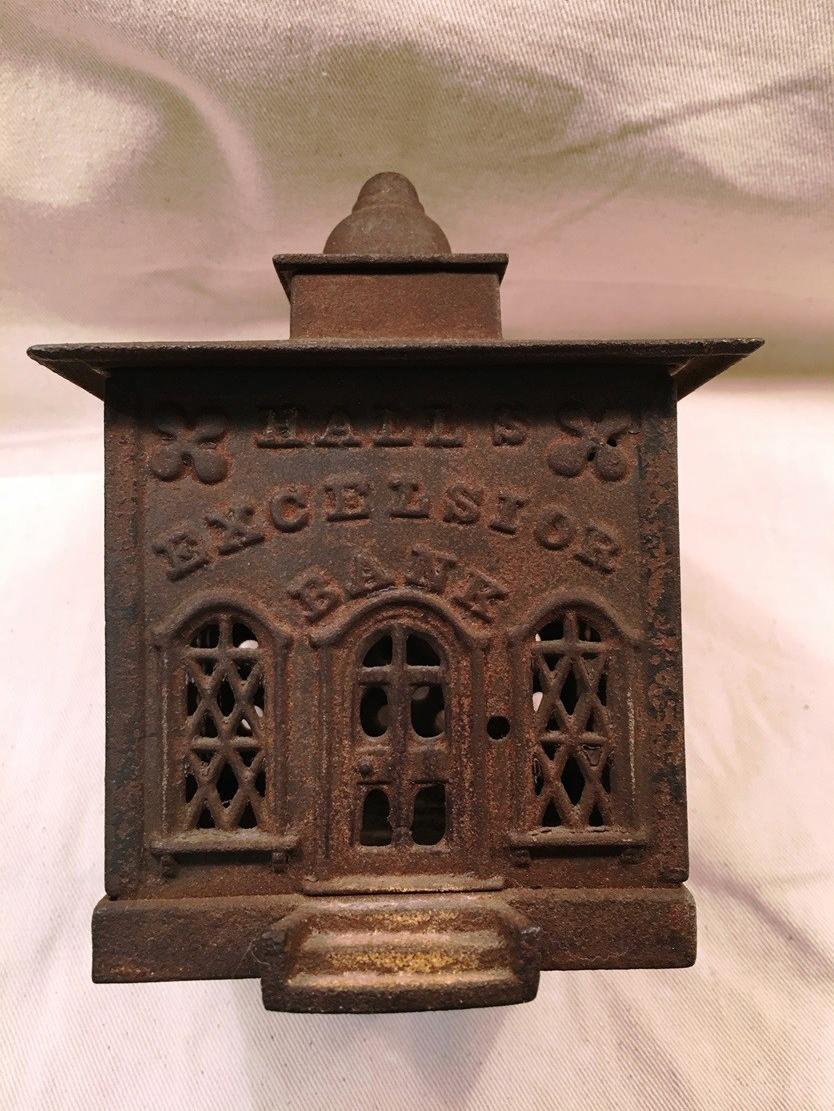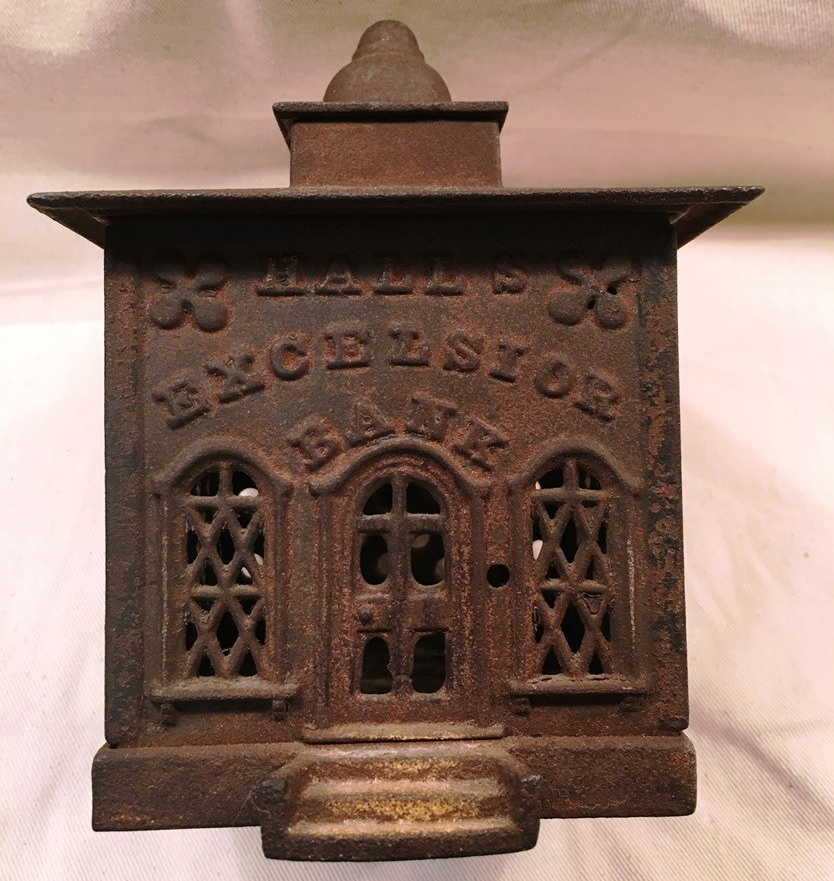
My parents moved across the country several times over the years, with second homes along the way. Each time they moved, they hauled not only the necessities, but also lots of “stuff,” which was … trash or treasure?
One item left to us was a rusty and broken child’s bank in the shape of a bank building (see photo of the actual bank, above).
Over the years, my father had talked fondly of one of the few possessions he had and loved as a child—a bank with a nifty mechanism on the top that took your penny and flipped it into the bank—kerplunk!
Was this rusty bank HIS bank? Was this the only physical memento my family had of my father’s childhood over 100 years ago? Or, just as likely, was this simply an item my dad picked up at a flea market years later because it reminded him of that childhood joy? Should this item have emotional significance for us--or would it be OK to put it in the “discard” pile?
Recently I took a break from my work as a financial organizer / daily money manager. My siblings and I gathered in the storage area containing what was left of my parents’ many collections. We puzzled over the rusty bank: was it trash or treasure? What should we do with it?
My sister-in-law, unencumbered by our childhood memories — faulty or otherwise -- spoke up. “I think it’s cool,” she said, reaching for the bank. “I want to take it home.” And she did. It now sits on a shelf in her and my brother’s dining room, either holding a place of honor or … just a place.
Does your family, or maybe a client, have a “rusty bank”? Do you know the family story behind it? If so, take this opportunity to save future generations from the “rusty bank” quandary my family experienced by letting loved ones know whether the items you’ve collected should be treated as trash or treasure.
Next month, I’ll share some resources for handling family treasures.

